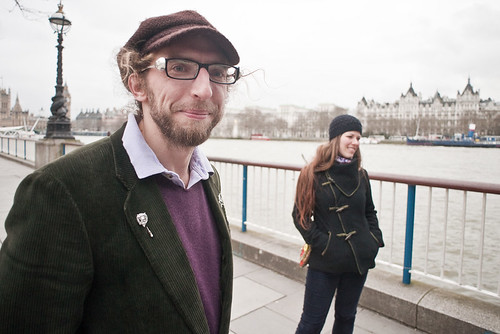Here are just some of the rules of photography:
This is a series where through analysing photographs that have defied convention to produce powerful results, which have been highly praised and awarded, we will show you how to have some fun breaking rules.
For this first article I shall discuss possibly the most often talked about "rules", which pertains to composition. We often ridicule those who mindlessly point the camera and shoot with the subject slap bang in the middle, but should we not also ask the same questions for those who unquestioningly put all our subjects on the thirds of a frame.
From the images above we can see composition is actually just a fancy term for using space to best express yourself. The rule of thirds, or golden spirals/triangles are general guidelines, when used in conjunction with other compositional concepts its a formula for producing visually pleasing images most of the time.
Symmetry is one key situations where the rule of thirds breaks down, it's more powerful to place lines of symmetry centrally, however it doesn't have to be exact, subtle symmertries seen above work just as well.
Another scenario is when objects frame or surround an object, so long as the frame doesn't impinge heavily on the main subject, it will help to draw the viewer to look at what is inside the natural framing. Structures such as archways are a common example, however Sarah's photo (above) makes use of trees and lines in the architecture as framing.
The examples I've explained are not the only ways to break the rules, so really its about exploring and gaining experience, however we all have bad or off days, so the rules exist as a 'Plan B' to fall back on. For example you're on holiday and have only one chance at a location, you've got to shoot it but you're just now feeling inspired, relying on a set of rules improves your chances of getting visually interesting shots.
1) Rule of thirdsThat you can break, photography is an art form, as such we should avoid seeing rules as hard and fast laws, and instead as guidelines that often make for the best aesthetics. Great photographic works often stand out by breaking the rules.
2) Always leave space for subjects to move into
3) Fill the frame
4) Use a fast shutter speed for action shots
5) Portraits need telephoto lenses
6) Don’t use direct flash
7) Shoot from low down, high up, just anything but eye level
8) Don’t shoot landscapes at midday
9) Avoid shooting into direct sunlight
10) Don’t blow out the highlights
This is a series where through analysing photographs that have defied convention to produce powerful results, which have been highly praised and awarded, we will show you how to have some fun breaking rules.
For this first article I shall discuss possibly the most often talked about "rules", which pertains to composition. We often ridicule those who mindlessly point the camera and shoot with the subject slap bang in the middle, but should we not also ask the same questions for those who unquestioningly put all our subjects on the thirds of a frame.
Above: Here are two examples where compoisition has not worked well. The image on the left leaves too much space in the sky, whilst the image on the right doesn't use the frame effectively by leaving space all around and a cluttered background.
From the images above we can see composition is actually just a fancy term for using space to best express yourself. The rule of thirds, or golden spirals/triangles are general guidelines, when used in conjunction with other compositional concepts its a formula for producing visually pleasing images most of the time.
Above: This photo appears to break the rules, yet still works. It's use of symmetry, framing and colour produces the impact. © Sarah Tsang 2014
Symmetry is one key situations where the rule of thirds breaks down, it's more powerful to place lines of symmetry centrally, however it doesn't have to be exact, subtle symmertries seen above work just as well.
Another scenario is when objects frame or surround an object, so long as the frame doesn't impinge heavily on the main subject, it will help to draw the viewer to look at what is inside the natural framing. Structures such as archways are a common example, however Sarah's photo (above) makes use of trees and lines in the architecture as framing.
The examples I've explained are not the only ways to break the rules, so really its about exploring and gaining experience, however we all have bad or off days, so the rules exist as a 'Plan B' to fall back on. For example you're on holiday and have only one chance at a location, you've got to shoot it but you're just now feeling inspired, relying on a set of rules improves your chances of getting visually interesting shots.




No comments :
Post a Comment